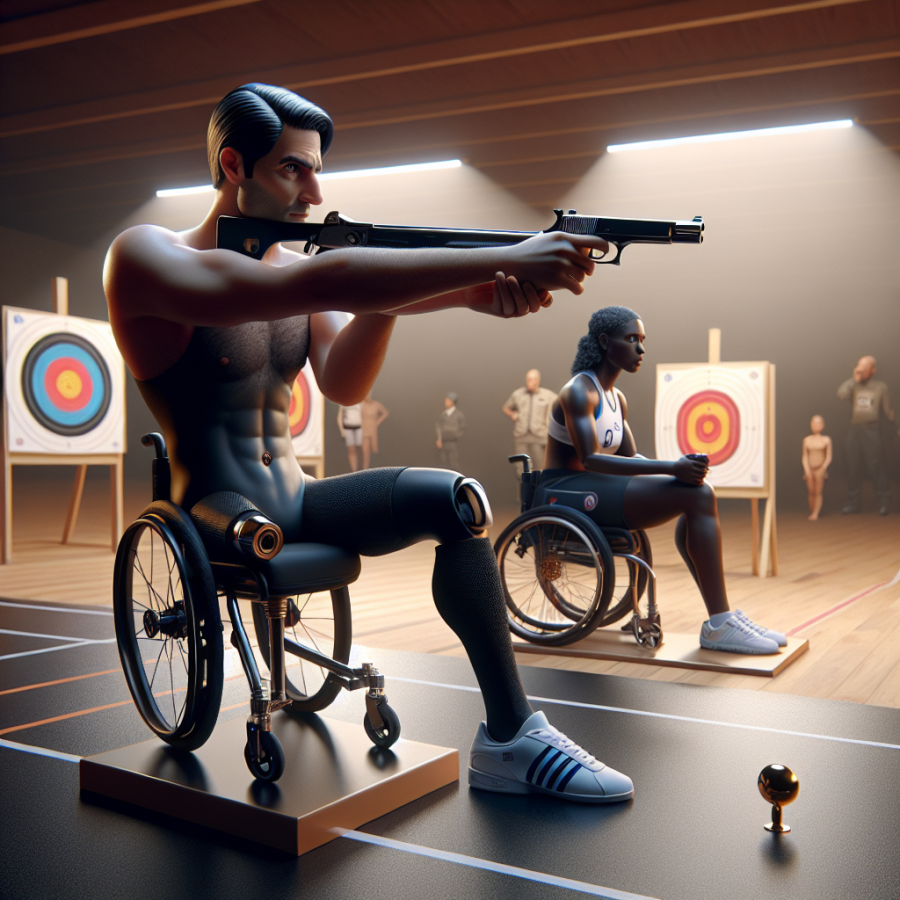Beyond Limitations: Celebrating Success in Paralympic Pistol Shooting
The Paralympic Games are a powerful stage for athletes with disabilities to showcase their talents, tenacity, and competitive spirit. Among the various sports featured at the Paralympics, pistol shooting is one that demands precision, control, and mental fortitude. Athletes in this discipline compete in events carefully designed to accommodate their specific physical capabilities, pushing the boundaries of what is achievable and redefining the term 'limitation.'
Paralympic pistol shooting follows similar rules to its Olympic counterpart, with competitors required to hit a series of targets from a set distance. However, the equipment and classifications are adapted to level the playing field for athletes with different disabilities. The classification system ensures that the success of the competitors comes down to skill, concentration, and determination rather than the degree of impairment.
One of the most significant aspects of Paralympic pistol shooting is the technology and innovation involved in the sport. Customized equipment, such as shooting stands for athletes with balance issues and specialized grips for those with limited hand function, allow shooters to compete at their best. With these adaptations, Paralympians can perform with outstanding accuracy, sometimes surpassing the achievements of able-bodied shooters.
The sport also exemplifies the incredible progress that can be made through rigorous training and mental conditioning. Paralympic shooters demonstrate remarkable levels of focus, often honed through years of practice and competition. The breath control, stability, and trigger discipline required are a testament to the athletes' dedication and the comprehensive support teams behind them, including coaches, physiologists, and sports psychologists.
Paralympic pistol shooting has seen its share of memorable moments and inspiring champions. For example, consider the achievements of someone like Jonas Jacobsson from Sweden, one of the most successful Paralympic shooters of all time, whose career spanned incredible nine Paralympic Games, earning him numerous gold medals. His story, along with those of many other Paralympic shooters, serves as an empowering example of how individuals can reach extraordinary heights in sports, regardless of physical challenges.
Moreover, the camaraderie and community built through international competition have positive ripple effects that extend far beyond the range. Athletes often express how the sport has brought them a sense of purpose and a community that understands and shares the challenges and triumphs of adaptive sports. This sense of solidarity and shared experience is a powerful force, both inside and out of competition.
Read also:
Jūkendō: The Martial Art of the Bayonet Explained
Mastering Precision: The Journey to Paralympic Pistol Excellence
Within the competitive and inspiring arena of Paralympic pistol shooting, athletes aim not just at targets, but at perpetual self-improvement and the mastery of precision. The journey to achieving Paralympic excellence is arduous and demands an unwavering commitment that goes beyond physical training to include mental fortitude, technical expertise, and adaptive strategies.
Athletes begin by developing a profound understanding of fundamental shooting techniques. The stance must be adapted to accommodate the shooter's physical abilities, ensuring stability and balance. For wheelchair-bound athletes, for instance, the chair becomes an extension of their body, and mastering its positioning is crucial.
Grip is another critical component of precision shooting. It must be consistent with each shot, marrying the shooter's physical capabilities with the ergonomics of the pistol. Custom grips are often used to ensure the pistol naturally aligns with the target when the arm is extended.
Sight alignment and sight picture are key in Paralympic pistol shooting. Athletes must train their eyes to focus not on the target, but on the pistol's sights, ensuring that each shot is as accurate as possible. Given the varying levels of visual acuity among athletes, this skill can take considerable time to hone but is essential for consistent performance.
Breath control is an area where Paralympic shooters spend a significant amount of time practicing. The act of firing a shot in between heartbeats to minimize movement and enhance stability is a technique that can take years to perfect. Adaptive breathing techniques are also developed to accommodate athletes' individual physical conditions.
In addition to physical training, mental preparation is a substantial piece of the puzzle. Shooters engage in various mental training techniques such as visualization, meditation, and routine-setting to increase their focus and reduce anxiety. The ability to maintain concentration and composure under the pressure of competition is as vital as the physical aspects of the sport.
Equipment plays a vital role in the pursuit of pistol shooting excellence. The selection of a pistol, ammunition, and other gear must be meticulously considered. Each piece of equipment should complement the athlete's specific physical requirements and shooting style. Understanding and maintaining one's equipment is also a part of the shooter's skill set, affecting both performance and safety.
The rules and classifications in Paralympic pistol shooting are designed to ensure fair and equitable competition among athletes with different types of impairments. Mastery of these rules is a must to compete at the highest levels.




